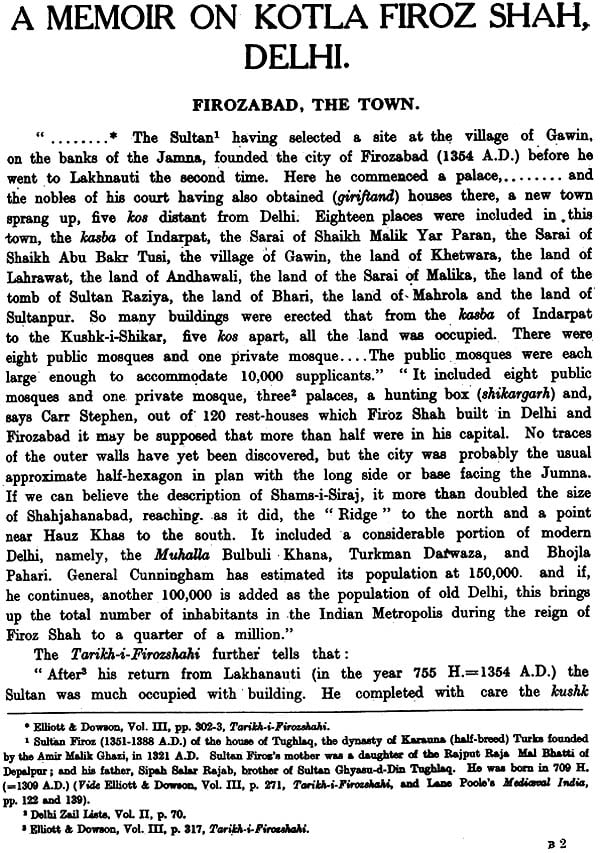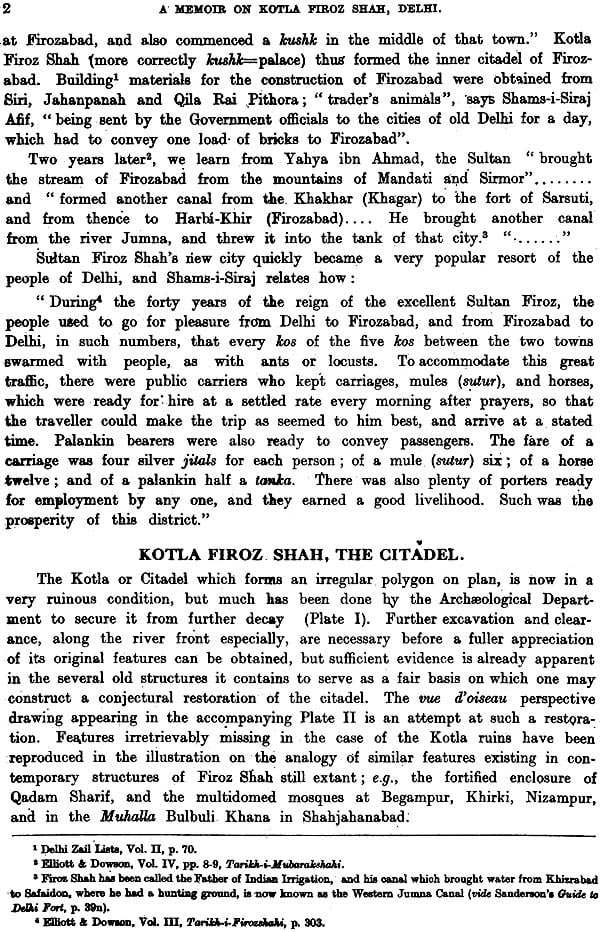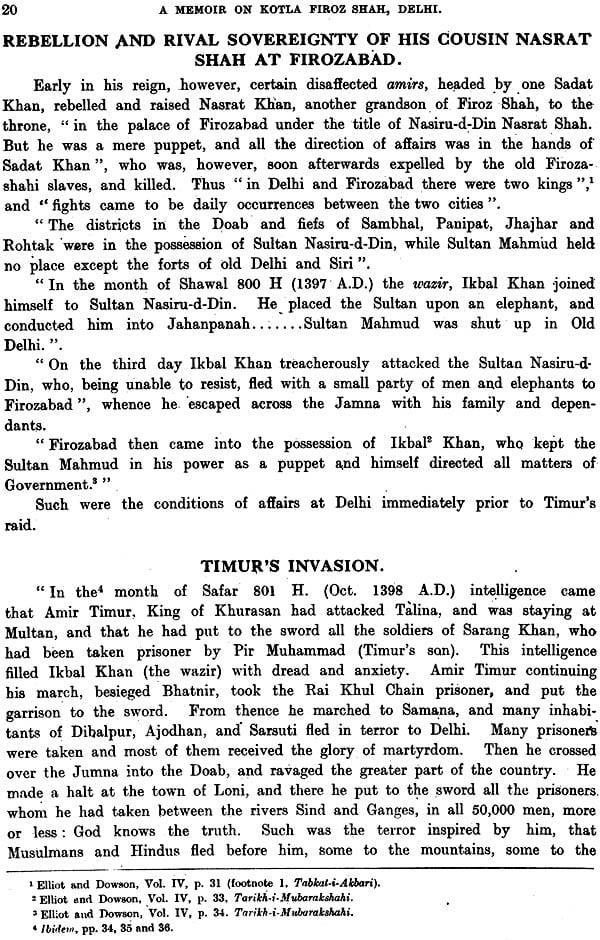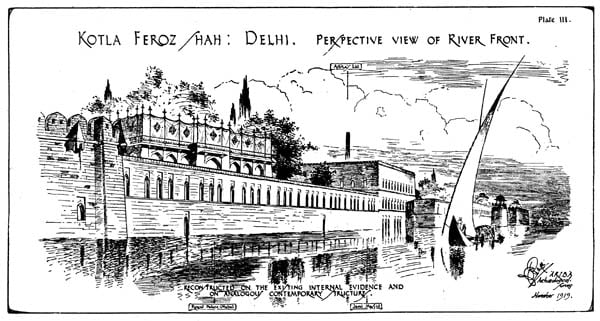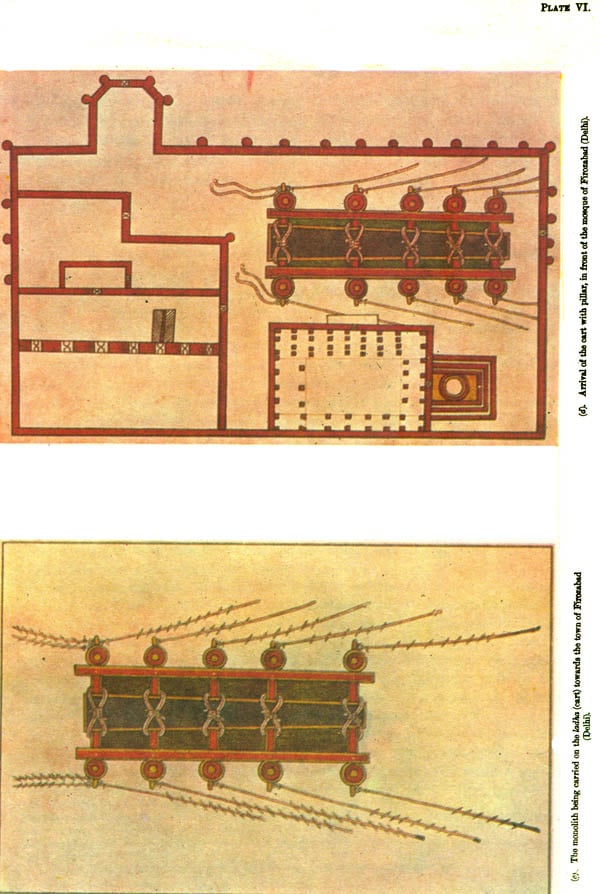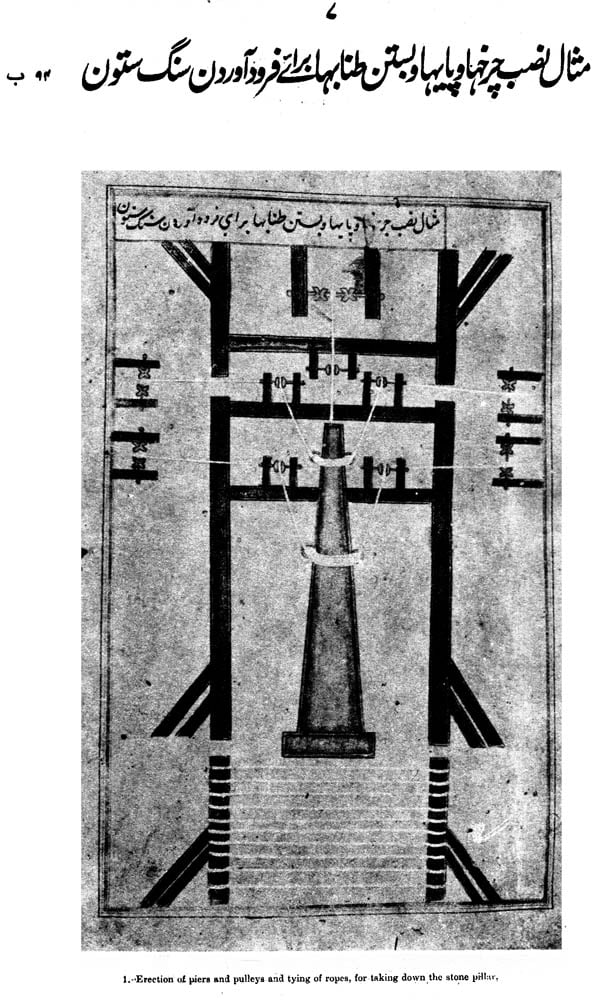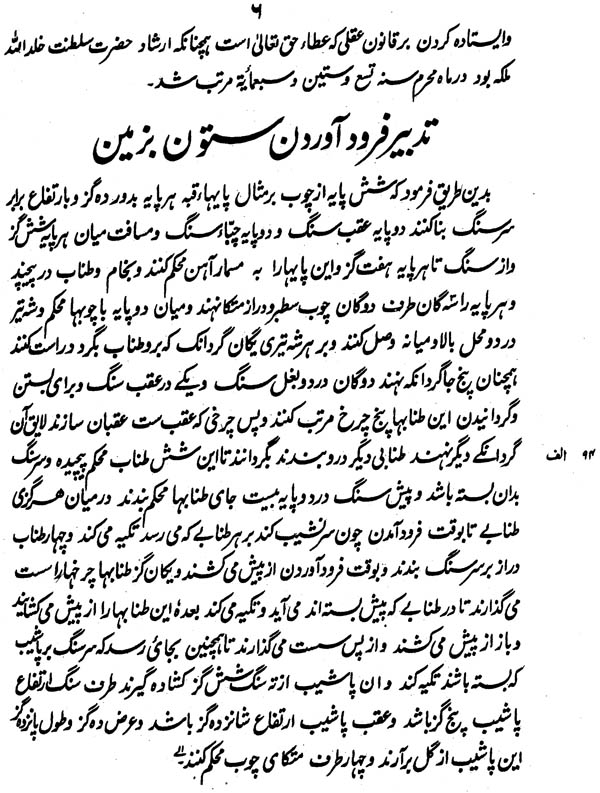
A Memoir on Kotla Firoz Shah, Delhi
Book Specification
| Item Code: | NAL457 |
| Author: | Mohammad Hamid Kuraishi |
| Publisher: | Archaeological Survey of India |
| Language: | Urdu and English |
| Edition: | 1999 |
| Pages: | 66 (14 B/W and 4 Color Illustrations) |
| Cover: | Hardcover |
| Other Details | 10.5 inch x 8.5 inch |
| Weight | 490 gm |
Book Description
In the preparation of this memoir on the ruins of kotla Firoz Shah at Delhi Mr. Page had in mind the desirability of attempting to retrieve for the reader the original "atmosphere" of the old fabric, with all its historical associations and charm; and to reveal the distinctive traits and outlook of those who founded and peopled it in the 14th Century A.D.
As a means to this, Mr. Page had recourse to the original narratives of the Mussalman historians of the time (as translated in Messrs. Elliott and Dowson's invaluable volumes) and has quoted in extenso from their writings. Verbose and redundant though these annals often are, they nevertheless reflect, as noting else can, the mentality of their environment and period, and will, it is hoped, help the reader to visualise the life of the time, and repopulate for him the empty remains of what was once the royal retreat of a Turkish king of Delhi.
Besides the works, particularly by Muslim historians referred to by Mr. Page in his Memoir, there exists another trustworthy and contemporary account of Firoz Shah' reing as narrated in the pages of Sirat-i-Firozshahi, a Persian manuscript in Nastaliq characters deposited in the Oriental Public Library at Bankipore and enlisted in its Catalogue as No. 547. From the Catalogue it appears that nothing is known about the author of Sirat-i-Firozshahi but the verse at the end of the manuscript the work to A.H. 772 (A.D. 1370), i.e., the twentieth year of the reign of Firoz Shah. Sirat-Firozshahi thus chronicles the events of the earlier part of Firoz Shah's reign. It is divided into four chapters or babs; and the folios of the second chapter dealing with the removal of the Minarah-i-Zarrin (Golden Pillar) have been transcribed and translated by Mr. Mohammad Hamid kuraishi, B.A., to form a supplement to Mr. Page's Memoir on kotla Firoz Shah. The illustrations contained in the original not only add charm to the manuscript but portray the minutest details of the removal of the pillar-its carriage in boats and installation on the citadel at Firozabad, where it stands to the present day.
| Preface | VII |
| Firozabad, the town | 1 |
| Kotla Firoz Shah, the Citadel | 2 |
| The Lat Pyramid | 3 |
| The connecting bridge | 5 |
| The Mosque | 6 |
| The river front and Royal palaces | 7 |
| Interior courts and Gates | 8 |
| The Baoli | 8 |
| Water Tanks and Ducts | 9 |
| The Citadel Walls; Main entrance bay | 9 |
| Defence of the walls | 10 |
| Contemporary accounts of the Citadel | 11 |
| Firozabad the Royal retreat | 11 |
| Features of the Palaces | 11 |
